Prepping is a never-ending challenge. Building a stockpile that will see us safely through any emergency we might face is something to be desired, while at the same time like it’s something never to be attained. Nevertheless, it’s up to us to do it or at least to try and do it as well as we can.
There are always areas we find, where we need to add to our stockpile. That’s part of the process. As long as I’ve been in this, I still find things that I need to add.
Some of those are things I never realized I needed, some are things where I hadn’t stockpiled enough and some are new items that I find, which I hadn’t considered before.
Medical Area
One of the areas I find that people tend to overlook is in the medical area; both medicines and first-aid supplies. Part of this may be because people don’t know what to stock and part might very well be because they’re afraid of what it will cost.
Medical expenses tend to be high and we translate that into thinking that a trip to the pharmacy for over-the-counter medicines and bandages will be high as well. Yet with some careful planning and buying, we can get everything we need for a reasonable price.
Medicines and first-aid in general are an important part of survival. We can’t assume that the medical community will be intact in the wake of a disaster. Even if it is, whatever hospitals and clinics are open will be overrun with people needing help.
The doctors and nurses will be run ragged, attempting to take care of people without the necessary medicines and supplies. As time goes on, this situation will become worse and worse, as supplies are used up. It’s doubtful there will be any resupply.
That’s assuming, of course, that we can get any sick or injured family members to a hospital or clinic. Once gasoline supplies run out, we’re going to be limited to walking, unless we have some other means of transportation, such as a bicycle. That probably wouldn’t work very good as a makeshift ambulance.
With that in mind, we want to be ready to treat as much as we can ourselves. That means having over-the-counter medicines and first-aid supplies on hand.
It would also be a good idea to take some time to learn as much as you can about first-aid and basic medicine. There are ample resources around, such as first-aid classes and videos available online.
Related: How Will You Treat Your Current Ailment When The Medical System Collapses?
Buying For Less
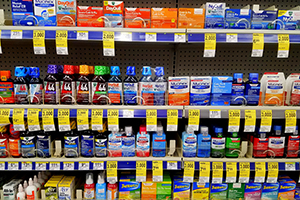
We all face challenges paying for our preps, so before buying anything, it’s always a good idea to make sure we’re getting a good price.
Fortunately, Walgreens has a house brand for many products, giving us a good way of saving money right off the bat.
But that’s the only way of saving money. Some things can be replaced by less expensive alternatives; something that’s definitely worth doing, especially if the alternatives will work about as well as the original product.
Over-the-Counter Medicines
The first stop in our trip to Walgreens is at the over-the-counter medicines. This is the major reason for the trip and one which we need to spend some time.
Symptoms for many minor medical problems can be alleviated through these over-the-counter medicines, allowing the body to heal itself.
While they aren’t really curative medicines, few medicines are. most just treat symptoms, including many of those we need prescriptions for.
Here’s a list of things to look for:
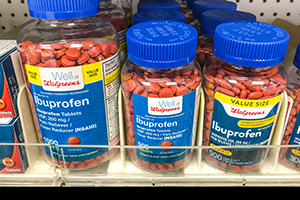 • Pain relievers – Ibuprofen and Acetaminophen will take care of most situations. Buying the extra strength version is a better deal.
• Pain relievers – Ibuprofen and Acetaminophen will take care of most situations. Buying the extra strength version is a better deal.
For example; a box of 100 extra strength Tylenol works out to 10.5₵ per pill, which contains 500mg.
A box of 100 normal strength Tylenol works out to 8.5₵ per pill. But those are 200mg each. So you’d have to take 2.5 pills to get the same amount of medicine, which makes it 21₵ per dose.
• Lidocaine – a topical anesthetic cream
• Benzoine (optional) – helps promote adhesion of bandages
• Hydrocortisone cream – for reducing itches from rashes
• Antihistamines (equivalent to Benadryl) – to reduce runny noses and treat allergies (Walgreens brand is less than ½ the cost of Benadryl)
• Decongestant (equivalent to Sudafed) – to relieve stuffy nose
• Dental repair paste – for relieving a chipped or broken tooth
• Loperamide – for diarrhea
Related: The 10 Cents Medicine That Every Prepper Needs
Other “Medicines”
While these items aren’t really considered medicines, I highly recommend adding them to your kit. They will serve to alleviate some conditions, without having to go find a doctor.
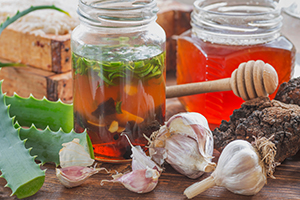 • Aloe Vera gel (not juice) – can be applied to the skin for treating burns and other skin irritations. If you have Aloe Vera plants growing at your home, you won’t need this, as you can harvest the plants and extract the gel right from them.
• Aloe Vera gel (not juice) – can be applied to the skin for treating burns and other skin irritations. If you have Aloe Vera plants growing at your home, you won’t need this, as you can harvest the plants and extract the gel right from them.
• Garlic (with the vitamins) – One of the best natural antibiotics in existence, as well as being a natural anti-fungal and anti-viral. With the difficulty in buying antibiotics without a prescription, having garlic on hand, as well as other natural antibiotics is an important part of keeping your family healthy, especially if anyone develops an infection.
First-Aid
There’s a greater chance of needing to treat some sort of injury that someone in the family has than there is of having to treat an illness. Therefore, it only makes sense to be prepared to take care of those injuries. That means having the means to clean and bandage them, regardless of the injury’s size.
Before getting into specific first-aid supplies to pick up at Walgreens, let’s talk a minute about what we’re actually trying to accomplish with bandaging a wound.
First-aid supplies can be expensive. But there are alternatives we can use in some cases, which will actually do just as well, sometimes even better.
Whenever we bandage a wound, it is necessary to clean the wound first, removing foreign matter from it. This can be done in most cases by rinsing it with water. If water is clean enough for you to drink, it’s also clean enough to rinse an injury with.
After that, an antibacterial cream, ointment or poultice should be placed on the wound to kill any bacteria that are there on the surface or in the injury. Then the wound is bandaged, which catches the blood and promotes clotting. The bandage also works to help keep the injury clean, so that it won’t become infected.
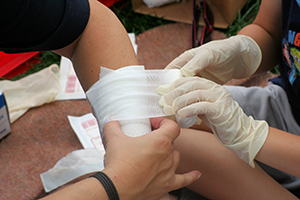
Long before modern adhesive bandages were invented, people were using cloth and even soft leather as bandages.
These can be sterilized in boiling water, making them as safe for use as something coming out of the pharmacy.
You’ll most likely need to turn to cloth bandages eventually, although you will probably want some regular ones to start out with.
So, here are the first-aid supplies you really should have:
• Rubbing alcohol or isopropyl alcohol – as an antibacterial to clean out wounds
• Antibacterial ointment – to help prevent infection
• Bandages – Rather than buying a lot of gauze or bandages, I recommend buying sanitary napkins. These are much less expensive than bandages, are sterile and are designed for soaking up blood. They can be cut to the size needed, allowing you to get the most out of them. Buy some thin ones and some thick ones, as not all wounds are the same.
• Elastic Bandages – not an absolute must, but useful for sprains and breaks
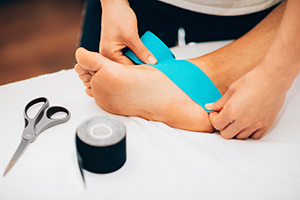 • Medical Tape – This is another expensive item that can be replaced by less expensive ones, especially if you are accustomed to using the new cohesive medical tape. I have used both masking tape and duct tape in place of medical tape. Both work well, although the duct tape can be difficult to remove.
• Medical Tape – This is another expensive item that can be replaced by less expensive ones, especially if you are accustomed to using the new cohesive medical tape. I have used both masking tape and duct tape in place of medical tape. Both work well, although the duct tape can be difficult to remove.
As a replacement for the cohesive medical tape, I recommend buying cling wrap, of the type used for storing food in the refrigerator. It’s a whole lot less expensive, the rolls can be cut to narrower widths and the cling wrap does a good job of mimicking the function of the cohesive tape.
• Tourniquet – A good tourniquet is invaluable for serious injuries; but the good ones are rather expensive. However, the same thing can be done with a piece of cord (like paracord) and a stick to act as a windlass to tighten it up.
Related: DIY Gunshot Wound Kit For When SHTF
Keep in mind that the idea is to be able to fulfill the function, rather than having something that looks pretty. Bandages should be changed often, at least twice a day; so even if you do try to buy regular bandages, you’re going to need a lot of them to do the job.
The substitutions I’m talking about here may not look all that good, but they’ll work, and that’s ultimately what it’s all about.
A Couple of Pieces of Important Equipment
Having the right medical equipment can be just as important as having the right medical supplies.
But once again, medical equipment can be expensive. Nevertheless, there are a couple of things which are important to have:
• Fine-pointed Tweezers – for getting foreign matter out of a wound
• Thermometer – for checking the patient’s temperature, looking for infection
One Final Point
There are many other things I usually recommend in a family emergency first-aid kit, which I have left out of this article.
My goal here was to show you what you could do with $100; not to build the perfect first-aid kit. The point is, you don’t really have to spend all that money to get something which will meet a lot of your needs.
If you have more money to spend at a later date, then I would recommend augmenting the first-aid supplies and medical equipment that I’ve listed here. But if you can’t do that, what I’ve mentioned will meet most of your needs.
You may also like:
Frugal Prepping: How to Get Cheap and Reliable Ammo For SHTF
If You See This Plant In Your Backyard, Burn It Immediately (Video)

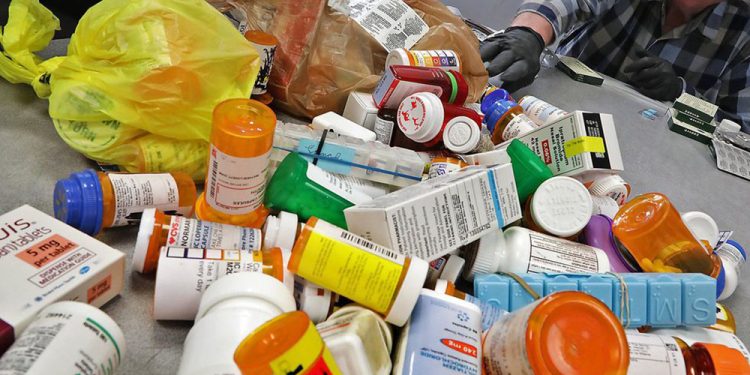


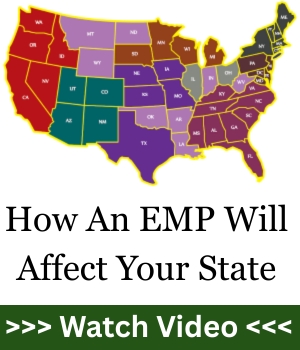
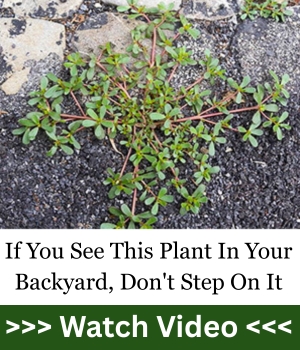
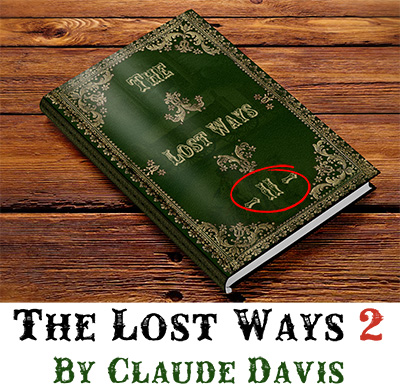
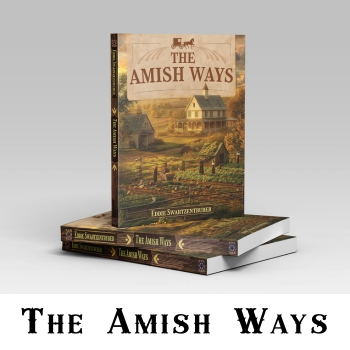



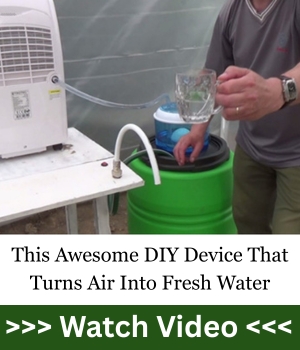




Sanitary napkins are NOT Sterile!!!
Why would they be? Original use??!!!
You can buy Sterile ABD bandages.
Cloth you buy for bandages can be boiled, but you won’t be putting it on wet! As it dries it will NOT be sterile.
I would also recommend if you buy a tourniquet, that you KNOW what the heck you are doing!
Never ever on a joint. Note the time of application and how long to keeSterile. Get some training .
Also buy some emergency shears.
A good pair!!
Peace,
MadFab
We used sanitary napkins in Nam and the sand box for dressings, and tampax for penetrating wounds with a hole to plug. Jam em in there and help stop the bleeding as they swell a tad, and keep FURTHER junk from getting in there – PERFECT. The wound is already dirty anyway, and some of the enemy dipped ammo tips and punji sticks in animal poop and let em dry in the sun. A nearly sterile or pretty darn clean napkin or tampax for temporary use is FINE to get you to the ER, so get over that. Ya got the REAL stuff, nice and sterile, great, use it.
If the SHTF and there IS NO ER, then use the cleanest stuff you have for the dressing after you’ve cleaned the wound. Even if you have a suture kit, readily available, and can stitch yourself up, in the field with no antibiotics one option is to leave the wound open if not too bad or huge and gaping wide open, so you can CLEAN IT to prevent infection. Once you sutured it, you can no longer get some H2O2 in there to clean it, which invites and almost assures infection that WILL REQUIRE antibiotics and could if it got bad, make you septic and come down with a bad case of death.
In a pinch, Vodka has been used to do the final cleaning of open wounds prior to closure or final dressing.
If you HAVE better sterile bandages to use great, but EXPENSIVE, but to use non-sterile TEMPORARILY to get you to real medical assistance is the least of your problems in many cases. Whatever made that wound wasn’t sterile. I can almost assure you that a sanitary napkin or tampax is FAR cleaner than what made that hole! Not sterile but also, NOT likely to hurt you either, so relax on that. Yes, sterile is best but $$$ and many are thin and not very absorbent. Ya got real ABD dressings, use em!! What happens when you run out?
Now, if the wound isn’t too bad, and you can clean it properly and professional attention is not needed OR available anyway, by all means use the sterile dressing when done addressing the wound and cleaning of same, itself. Wounds like to breathe to heal so don’t generally use occlusive coverings. Thin layer of triple antibiotic goop ON THE DRESSING, over where the wound is often helps the forming scab to NOT stick to the bandage. Don’t have that, then use Vaseline on the dressing. THIN coat. You want it to breathe. You do not want to pull off your healing scab along with the dressing.
For tape, TRY to just use the paper tape as the better quality tapes, depending on location used, will pull hair out BUT some of the plastic-like tape wants to pull SKIN off of the elderly.
Best is the tacky one side stretchy on a little roll 2 – 4 ” wide stuff to hold your bandage or dressing in place. It sticks to itself fairly well, and you can always run a couple loops of tape OVER that just barely snug. Works GREAT on dogs but you still have to keep em from removing it.
In addition to rubbing alcohol, couple quarts of cheap Wally World H2O2 (Hydrogen Peroxide) is excellent for cleaning wounds and diluted down to half strength is adequate for a pour over wound cleanser. To clean deep lacerations you are not seeking professional care for, DO NOT USE FULL STRENGTH H2O2 for the cleanings, as it can wash off the tissue trying to granulate in there to HEAL that would. Use half strength at most. “It’s STILL working at carrying OUT dirt and goo, and killing the bacteria well, AND helps not deplete your supply”. Full strength peroxide is NOT better when the wound is trying to granulate and fill in and heal, including a scabby area.
Remember Tylenol is ok for many for pain, BUT has zero effect on “inflammation” like Ibuprofen and generic Naprosyn (Naproxin) have in spades. (NSAID type medication) Naprosyn is a superior med for most (not all) for both pain and inflammation, AND it’s a twice a day med, not Q 4 hours like Tylenol. This also means a bottle with 100 tabs is good for 50 days of use. A bottle of 100 Tylenol not nearly that long!! Win-Win. Cheap off the shelf at WW.
Most pain is accompanied by swelling tissues, even if you can’t see it. Shelf life is very good and almost ALL pain meds are FINE WELL after the outdate!! I mean 5 years after. Might lose 5% – 8% POTENCY 2-4 years past the outdate. Who cares?
ONE NOTABLE EXCEPTION among meds is an antibiotic, is the now rarely used Tetracycline, which you don’t have anyway, and it’s not for pain either. NEVER take old Tetra. Can shell your kidneys. Point is, VERY FEW meds HARM YOU after the outdate, they just start to lose a SLIGHT amount of potency. I know of no off the shelf med for pain that will HURT you 5 years after the outdate, provided they were kept clean, dry, sealed. I’m STILL using 20 year old Aspirin from the dollar store, and breaking them in quarters, for my daily aspirin use. I got a few bottle of that when ya got 250 – 350 tabs for a buck!! The RX business tries to scare you into throwing out perfectly good stuff, just like the food companies do with canned foods, veggies, etc.
I’m a combat Marine and an advanced practice RN with 30 years under my belt. Of course, I AM NOT giving you legal professional licensed advice here, just food for thought. Your mileage may vary.
Vulcan: Animal manure? Human, and if a corpse or carcass was rottg nearby, they used that.
OK, you convinced me sanitary napkins and tampax are good, but what if there is no ER? I don’t know where you live, but calendula and wivian tobacco both self-sow. Calendula needs help to survive, it only gets a foot or so fall and weeds would kill it. Wivian tobacco (tobacco rurale) is still prefered by many to antibiotics for external issues, including minor bleeding. niio
Thank you for the listing of options for serious medical care.
One product I have used on myself is chitosan for stopping bleeding. Some years ago, I stepped on some broken glass with my bare feet. I might have needed a couple of stitches but that wasn’t an option then.
What I did have was chitosan powder in capsules. I opened up two chitosan capsules and sprinkled the powder on a 4 x 4 and slapped it on the wound. The blood was absorbed by the chitosan. It created an almost rubber-like pad over the wound. As I didn’t see any inflammation process surrounding the wound, I left the chitosan pad in place for about 3 days. I peeled it off and found a nicely healing wound with no signs of the slightest inflammation. I put a clean bandage on it.
Chitosan is sold as a diet pill / capsule but the same product is in some expensive high end combat wound packing.
I am glad that you mentioned the tissue paper thin skin of the very elderly. Some times, even paper tape for bandaging is too much for such delicate skin. I cut the sleeves off a long-sleeved well-washed and worn t-shirt and then cut that to length. I pulled that sleeve over the elbow wound. (It always seemed to be the elbows that got it for the very elderly.) With the soft worn out fabric next to the skin but over the bandage, I wrapped with self-adhesive stretchy sports tape.
If people are eating survival type foods, the chances of having skin that bruises more easily might be a factor. A lot of people are stocking up on various dried foods but not vitamin C. It could be that people might have the effects of scurvy, like on sailing ships of old. That will result in delicate skin.
You gave LOTS of really helpful information! Thank you!
A note of interest: Sanitary napkins were manufactured during WWI for use as bandages. It wasn’t long after that when it was sold as a menstrual hygiene product.
Why do I need to know the time of application for the tourniquet?
Mike:
Because if you leave it on too long you can cause permanent damage to the blood vessels, especially in fingers and toes.
Without blood circulating through them, those tiny vessels collapse in on themselves and stick together. When the blood flow comes back, the damage is done and they won’t reinflate. Tissue in that area won’t get any oxygen from the lack of blood flow.
This causes necrosis (dying tissue) and leads to gangrene and death unless the dead, infected tissue is amputated.
Mike: And if you don’t leave it on long enough, the person could bleed out. It only takes 15 minutes or less to exsanguinate an adult male.
Rubbing alcohol for Fever – Putting isopropyl (rubbing) alcohol on a child’s skin is a popular folk remedy for quickly reducing a fever, Although the alcohol may temporarily cool the skin as it evaporates. It works so quickly. Isopropyl alcohol is quickly absorbed through the skin.
Alcohol rubbed on legs and covered completely will help reduce fever, Mexican Remedy.
Can be dabbed in armpits and behind knees to bring down high fevers. In general, fevers are curative, but in young children they should not be allowed to run high more than a few days.
Testimonial: Take a glass bowl and fill it up with cold water and then add ice cubes to the bowl of water and then take one cup or half the bottle a regular old rubbing alcohol that you can buy at the grocery store, I think it’s like 70% isopropyl alcohol and add that to the bowl of water and ice cubes. Take some washcloths, probably like 3 to 5 of them, add them to the bowl of ice water and alcohol solution, then ring out the washcloth so they’re not sopping wet and then add them depending on severity of temperature of fever add washcloth to high up on the inner thigh right where your thigh meets your pelvic bone area.
Then take two more washcloths from the from the bowl of water alcohol solution, ring them out slightly, and then place them under the underarms and then take the 1 remaining washcloths and place it on the forehead.
If fever still hasn’t broke within 5 to 10 minutes, add more ice cubes to the water and quite a bit more rubbing alcohol to the bowl of solution washcloth and place them back on to the areas mentioned above. Continue till fever breaks, which should be quick but no longer than 30 minutes. I believe it almost every time guaranteed to break any fever. I’ve seen it work multiple times on different people ages ranging from 2 – 50 plus years old and it worked every time with fevers ranging from mild to severe 106 temp. And it worked almost instantaneously.
Why the hell are you sending people to CHINA-MART? why not use all the wild plants, roots, and the things that old Claude writes about??? lol< The hell w/CHINA-MART,,,
Cause it way better than not having it to just spite China and 97% of humans who live in cities know nothing about wild plants, roots, etc.
“Wild plants” can be very useful but you have to know what they are and how to use them. I have seen many articles on how to identify plants that can help save you but fewer articles on how to use them. If you don’t know how to identify them or use them you could make your condition worse. The best way to learn it is to have someone who knows take you out and show you what to look for and then how to use them.
I’d add to that Benadryl CREAM. Beats hydrocortisone cream for itching every day of the week.
The generic Sominex that helps you sleep dollar store stuff IS benadryl – so when ya need to go internal with itch control, there ya go. You could in a pinch, crush one to powder, mix with just a tad of any water based skin cream and get it to dissolve some, and just to keep it in place, and apply.
Necessity is the mother of invention.
Butterfly bandages are also something that I think is handy to handle minor cuts when you can’t get sutures.
We used TONS of those in the nursing homes, MD offices, and hospitals. Great to have on hand. They work best if you clean the area with a cotton wipe and rubbing alcohol, to clean the OIL off your skin before applying. THEN they stick well and stay in place much better. Same for anyone who must apply colostomy appliances.
Try super glue for small cuts or nu skin after cleaning up the injury.
Also, remember that Silver is GREAT for openings and will greatly reduce the possibility of infection.
Buy the .999 pure 1oz ingots. Cheaper than coins. Not only are they good for injuries but if you need some barter “money” Silver is easier to make change for, whereas Gold is expensive.
If you can find real Silver Silverware use it to eat with. Your health will improve.
Paracord and a stick for a TQ? That’s pretty funny, a TQ should be a least an inch wide and the time applied should be written on it, sanitary pads are not sterile as already stated. There are so many things wrong here I can’t even list them, between what is wrong and what is left out, best idea, disregard the whole thing and get some training, and buy yourself some decent products that you know how to use. It’s your life or your loved ones we are talking about, is it worth saving a couple of bucks, and cutting corners, to have a false sense of confidence?
My favorite med to have on hand is the generic “Wal-Fed” behind-the-counter. It’s a generic for Sudafed…but has that ‘extra’ ingredient to really help mask/aid symptoms. You have to sign for it and can only get a certain amount per month. Wouldn’t be without it.
the $1 Store chains have been decimated – but in better times you couldn’t go wrong with the $1 tubes of creams & ointments they offered >>> $3+ at the pharmacy chains for the same thing ….
As both a paramedic of 35 years and an instructor, your tourniquet advice was chilling. Paracord is not going to make an acceptable tourniquet unless you have no other choice to keep the person from bleeding to death and are willing to risk having the limb amputated. A leather belt would be a much better choice. The front leg section of a pair of jeans folded over once or twice to make a 1-1/2” or two inch band. Take one of those old pair of jeans you have sitting around, do some cutting and folding, add a sturdy type of windlass and put it all in a ziplock bag.
Rich, you neglected something vital. For yourself, body armor for all the nitpickers aiming at your back.So far, the only comment I found helpful is from Robin. niio
LOL I also thought Rich’s article was excellent!!! Truth is, MOST people stumble through life and never give ONE thought to this stuff, OR prepare for diddly. Rich’s article was not made for a SEAL team, it’s made to help the average guy or lady to get through an event and for that it was outstanding!! It also encouraged folks to ponder further, a win win.
@Vulcan,
You should start a blog too
I couldn’t agree more. Sure I would love to have all the top of the line name brand supplies and gadgets. But stepping back to reality, I am on a disabled person with a very small budget. I could either save for probably 2 yrs and go buy the (good) stuff or I can take a few dollars a month by scrimping on something else and vet a few of the generic ideas, including pads, tampons etc.i would rather have way will get you by in a pinch than be without but still saying don’t ave it yet but still saving for it..which plan will help me if I need it sooner than later
Jeanie: Same here, but each month adds to prep. Last spring (our time), chia seed (black) was harvested in Chile and Argentina. the price is down close to 3/pound from solaces like Living Foods, and chia was a mainstay. American Indian slaves live on a tablespoon or two a day in the colonial era. Lived and did well. i blew the money (129.00) and bought a small aquaponics unit for summer stuff (Arizona winter veggies are usually good) like some lettuce and so on. Then got spider mites, took it out and blew them away with water–a spray bottle works, as well, they drown easily. 4 heads of cabbage were shredded this morning and packed in a gallon jar, and a half-gallon for kraut. No salt but a little to wilt it. I have to use distilled water because ours is loaded with copper. in a week to 10 days in the heat, it’ll be done, no fuss, no muss, and no stench or mold. It stays crunchy even when frozen. Other veggies can be added to be pickled. this is summer kraut, and we love it raw.
We have 50 lbs of pinto beans from last year. No bugs, they were frozen for a week to kill any. they’re too dry to cook, but pintos were bred to be a flour bean. There’s still 10 lbs of mesquite from last season and more from this one. Those go in the freezer for a week the same reason all grain does.
200 lbs shell corn, rice, canned stuff. 15 lbs coffee and 8 lbs whole beans in the pantry. cases of juice. and more, and all was bought a few at a time. If I could, we’d take a trip to see family in Mexico. Coffee beans, roasted, are I think 25% of what we pay up here. Tropical fruit, the same. Fam says do not come now, the border is not good, and the roads (in their area, mostly dirt and mule tracks) are flooding.
I have confidence in your strength and because you’re a woman, and women were made strong than men. Read ClergyLady and Miz Kitty. they’re in the same boat we are if not worse, yet doing it. niio, walk in His beauty
When SHTF, there is no telling what time of year it can happen.
Best to stop up now while you can in case SHTF before you can forage for food and medicinal plants.roots.
Example:
If SHTF in JANUARY, you most likely won’t be able to locate needed things or they might be inaccessible.
You need enough to get by until you can locate needed things.
Or until SHTF scenario is no longer in effect.
One can prep for most things, but not for every thing.
There will always be something you didn’t plan for, but needed.
If people only knew the mind boggling amount of things and all the different things they use, there is little way anyone who is not rich could afford them.
FYI many things in Walgreens that are sold are also sold in Wal-Marx.
Just check ingredients and concentrations.
Notice that WAL greens and WAL marx both start with WAL ?
Things that make you go hmmm…
I have had great success with vinegar and honey. 2 tsp in water, then add LOCAL honey 1 or 2 tsp. Excellent trust me
Old timers would add a little cider vinegar and honey to water jugs, then go work in the fields. It cuts the dust and energizes. A great-uncle with over 20 years service, Army, got heel spurs from too much walking in his boots over the years. He came to live with us for a while because he was too crippled to do much. Mom started him on that, but he said he remembered that when a kid working in the tobacco patch down home. After a few weeks, he was walking. After a month or so, he was healed. I love to walk, but before the end of summer, he was walking me into the ground 🙂 niio
IF you have a pressure canner (small enough items can be used in a pressure cooker), you have yourself an autoclave to sterilize items. And while you’re at it, pressure can some water – it will be sterile. If you want to get fancy, get some of the blue paper and some of the tape that has black stripes show up when things have been heated long enough to be sterile. (the blue paper is what dr/hospitals use to wrap cleaned but non sterile items in. From cloth drapes so you have a sterile field to work on without contaminating sterile instruments to the surgical instruments. And when cleaning any instrument, make sure ALL of the blood or even flesh is scrubbed off of the teeth of things like hemostats! They need to be SPOTLESS before autoclaving.
Available for around $30 online and occasionally on sale for under $25, get at least 2 CAT Gen 7 tourniquets for your emergency supplies and an extra one to train with. Don’t scrimp on such a potential life saving tool.
Watching a friend of loved one bleed out because of trying to make do with paracord and a stick is a terrible idea.
I want all comments on this
Red is right, if you publish you have to be ready for criticism, don’t matter if you are right are wrong. I get a chuckle out of his comment, for sure.
LCC would no doubt lay down the law on plugging gunshot wounds with tampons, not a good idea! So far as sanitary napkins are concerned, do they still make the old fashioned ones that looked like a thick absorbent bandage? And does it matter, in a bleeding emergency, if the dressing is sterile? #1 job is control bleeding, worry about the rest later. That’s why we shouldn’t consider putting together a 1st aid kit w/o including a bleeding control kit, under 200.00 buys a kit with proper dressings, tourniquet, and control materials like quik clot and Israeli bandages. I added a small bleeding control kit to Everyday Carry which is real handy cause the women in my life are all past menopause.
If somebody is shot, or badly injured, or sick, your 1st aid supplies are going to have to include items like bed pans, cleansing wipes, micro fiber cloths and a pan for bathing. A simple thing like a long flexible drinking straw can save a helpless patient’s life. We all think of 1st aid as saving a life in the field, but the work really starts when taking care of an injured person at home.
Crutches!
Judge: I have a small phobia about crutches. A great-grandmother had only one leg (diabetic) but could fly better on her crutches than she could a broom. heaven help the kid after he got busted and she caught up to sink those clawed in his ear over some innocent misdeed. But, enough about older brothers.
Who, me? Nah, I was an angel! A saintly child…why bother having older brothers is you don’t learn why they got busted and how to avoid certain problems. Man, that belt sure stung, tho. Too many adults around, is why.
Tampons has uses other than well, what they’re meant for, like cleaning shotgun barrels, but all those fibers in a wound? Um, blackwidow cobwebs are a lot better and will stop bleeding. Spider webs are supposed to be good even for clotting arterial bleeding, but I really don’t know. minor cuts and scratches we use tobacco on adults. It seals and heals but scorches.
This year, the calendula is making massive numbers of heads and a few hundred are drying down nice in the garage. that herbal is so good prior to antibiotics doctors used to beg women to raise it for them. Because they could be packed in battlefield wounds, Civil War doctors got the petals by one-pound blocks. If one side in a battle ran out, doctors had the right to call a cessation to the fight and send a rep to the other aside to ask for some. That was the only civil part in the democrat’s war.
One major thing we all need to stock up is borax. Another is dry bleach. https://www.earthclinic.com/how-to-take-borax.html niio
One of my grandmothers was legally blind but she always knew who was causing the trouble. She’d make you go cut her a crab apple switch then get after you right where the backs of your thighs came out of your shorts. Bad vision, righteous aim. I salute all strong women.
Calendula is the real deal, probably didn’t do much for Minie ball wounds but would be excellent for healing feet after days of marching and for treating that ungentlemanly yeast infection nobody talks about, Monkey Butt, which can become an unbearable burning affliction after days of humping a load and laboring in camp in hot weather w/o proper sanitation. Time to add MB to Level 4 planning…
I have always found that no matter what you say right or wrong someone is always going to attack you for something you never said or even implied. In a dire situation, where you are without the perfect first aid kit you use whatever you have on hand. You are not going to say, “Well Bob, we are all out of sterile bandages so you are just going to have to bleed to death. Better luck in your next life. We’ll miss you around the campfire.”
Judge: Unionist doctors begged for calendula petals no less than the Confederates, and the North suffered minie balls. A Union doctor described minnie balls as horror.
Calendula here is from 1-3 generations. Smoke from the wilderness fires probably killed more of the garden than drought. A few survived and were supplemented with new plants. this year, all that survived are up and masses of blooms. Still barely a foot tall, but they’re here. Funny thing, two chicory came up, the two that I thought died off 2 years ago.
Up by Oracle, the sacred datura is in full bloom and no doubt the ‘witches’ will take the roots once fall comes. niio
Zero: You just nailed it. It makes you wonder about some, if they are adults to whine and carp. niio
Yes, at least one good pair of sharp scissors is a must.
I would also add medical use “super glue” if you can get it. I’ve had to use regular super glue on a deep but small cut that wouldn’t stop bleeding and it didn’t get infected or leave a scar.
Good quality real honey is very good for burns, again from my personal experience.
Unopened sanitary napkins are probably as sterile as bandaids, and if the wound is severe enough that you need kotex to sop the blood up, you’ve got more immediate problems than whether or not the dressing is sterile.
Dollar Tree has 4-packs of teeny little one-use super glue tubes. Soooo nice and convenient not to have to re-cap them. Use and toss! Four for a dollar can be a cheap, handy fix.
One thing that hasn’t been addressed here is reusable “sanitary napkins,” perhaps it has elsewhere. I’m making them by folding a microfiber washcloth to size and sewing that into a cotton envelope. It isn’t perfect however they are washable and reuseable. Better than a zero when you can’t buy them at the store.
You might want to look into reusable menstrual cups. They’re made of silicone, I believe, and are washable.
I’m past that point, thank God, but for you younger gals having not only plan b but plan c,d,e and f is definitely something you want to have settled before you need it.
Birth control, too. Having babies is going to be a real challenge in a post shtf world, so be sure those close to you know the basics of midwifery, in the likely event that you won’t have access to a hospital.
Yuck!! Messy things! Must ‘ve been designed by a man! Pads are MUCH more user friendly and comfortable. It’s worth the time to make these.
Babies have been born long before hospitals were built… Rue will throw a pregnancy.
Ursula:
“Designed by a man”…lol!
Yep, probably. But… they’re supposed to work well, if they’re used correctly. Plus, maybe double as a barrier type contraceptive… trying to think in terms of multi purpose, long lasting options here, so please bear with me.?
Think “toxic shock syndrome” If you need a “day after” use my engine cleaner… Coca Cola or Pepsi then rinse with clear water. Carbonation not required. Safer.
I use witch hazel. Have extra bottles of W/H, Iso Alcohol,H/Perox,Hand san and several containers of pads. Keep the pads around not just for general wiping and personal F/Male cleaning. They are multi purpose. Hemorrhoids, general cleaning of wounds, I even use them for washing mosquito bites! Pads work great! In S/W Fl this time of year mosquitoes are kinda bad. I have much more, but my point is that everyone should have different types of human cleaning products around not just for emergencies but for everyday use. The extra is to share with family or someone in dire need. The rest is for you!
Thanks,God Bless and stay safe…
Bill: and if you can, plant it in a patch of woods or a shady part of the yard. Very cool bush, and it blooms in November. niio
Jeannie:
Little by little, step by step…buy what you can, when you can. Put aside a little bit each month so you build a slush fund to take advantage of sales or for a bigger purchase, also for emergencies. Try to buy whatever you can used at yard sales and thrift stores or on clearance.
Use dollar store or generic to full advantage… five to ten dollars can buy a week’s worth of food for one if you’re not picky or have a restricted diet.
You’re a smart person, and I have confidence in your abilities!☺️
Pretty decent little overview for getting started with an inexpensive 1st Aid Medical kit. There are some good ideas here. It’s a minimal-foundational-type list of items to be secured on a limited budget. Really cannot add to the list without exceeding the $100.00 ceiling which was the gist of the piece … maybe add some pool shock to mix with water to be used as a disinfectant. Powdered and inexpensive, the main cost of adding sodium hypochlorate or calcium hypochlorite to the kit is the silicone container most of us use for small kits. It doesn’t take much.